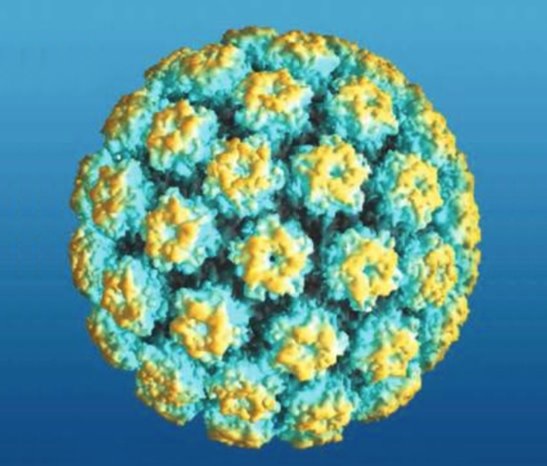Playlist
Show Playlist
Hide Playlist
Warts (Verrucae): Definition and Pathophysiology
-
Reference List Pathology.pdf
-
Slides Warts Verrucae Definition and Pathophysiology.pdf
-
Download Lecture Overview
00:01 Welcome. In this talk we're going to cover warts or verruca. 00:06 Very common lesions that almost all of us have at least seen if we haven't personally experienced. So these are benign. 00:15 I want to emphasize that they're totally benign, keratinocyte proliferations, they're tumors, but they almost never, in fact, probably, I should say, never convert into something that's malignant. 00:26 But they're caused by human papillomavirus, which is driving the proliferation of the keratinocytes. And we'll talk a little bit more about the pathophysiology momentarily. 00:36 So what's the epidemiology of verruca. 00:39 Well it's a fairly high incidence. 00:42 About 10% of the global population will have it. 00:45 And probably after acne this is the second most common cutaneous lesion that we'll see. 00:52 In terms of who gets it. 00:56 It's more common amongst immunosuppressed individuals. 00:58 And that's probably because they are less able to clear the virus that is driving this. 01:04 Interestingly enough, meat handlers also have an increased incidence, and that's probably because there are papillomaviruses in the meat that they're handling that is sufficiently able to enter into the human host. 01:20 Plus, they're also having small areas of trauma to their hands as they as they work with knives in the meat. 01:27 There is no particular age predilection. You can get it when you're a little tiny kid. You can get it when you're a really old guy or person. 01:33 Interestingly, lighter-skinned individuals versus darker skinned individuals have a 2 to 1 incidence. Although the mechanisms and the reasons behind that are not completely understood, and there is a similar ratio of women and men who are affected by this. 01:49 So let's talk a little bit about pathogenesis since the story is pretty well known and it's kind of cool, so bear with me. 01:56 There are well over 100 subtypes of the human papillomavirus. 01:59 And this is going to be the agent that's responsible for driving the proliferations that get recognized as warts or verruca. 02:08 The subtypes, depending on their tropism, will cause lesions at specific anatomic sites. So you see here that subtype one, two, three, four, ten, 27, 57, etc. 02:18 cause cutaneous warts, whereas six and 11 cause anogenital warts 16 and 18 have a tropism for the cervical or vulvar vaginal epithelium. 02:30 You don't need to memorize those numbers, although interestingly, it will become important in the story of cervical carcinoma, which is going to be a different talk for a different day and maybe even a different speaker, because different subtypes of the human papillomavirus infecting the cervical epithelium have different propensities to cause malignancy. 02:52 So that's a different kind of story. 02:54 But here we're mainly talking about the subtypes that just cause benign proliferations. Again you don't need to know the numbers per se. 03:02 So what is going on here. 03:04 So we have a virus that is sitting at the surface of the skin and provided we have decent barrier function, it can't get in to where it wants to go. 03:13 The cells can. The virus can usually only enter basal cells, so there has to be some break in the skin, some trauma, some micro injury that allows the virus to get from the surface in the stratum corneum, for example, down to the basal region, which is the cell type that has to be infected. The virus enters there, and now it's not trying to drive proliferation. That's not its goal in life. 03:42 It's just trying to make more virus. 03:43 Well, it turns out in order to make more virus, it needs to turn off the cellular machinery. 03:51 That would lead to further differentiation, to the process of stopping mitosis and starting maturation into mature keratinocytes. 04:01 So it does so by a couple of different mechanisms. 04:04 And in doing so by turning off that machinery of the keratinocyte so you can make more virus. It then causes proliferation of the keratinocytes. 04:13 How is that happening? So this is the cool stuff. 04:16 And you know I'm a nerd so bear with me. 04:19 This is important. And this same pathway by the way is going on in cervical carcinoma. 04:24 So you kind of want to pay attention anyway. 04:27 The viral oncogenic proteins, the ones that are going to drive the proliferation of the keratinocytes do so through two proteins. 04:34 One is called E6 and the other one is called E7. 04:37 Terrible names. But whatever E stands for early. 04:41 So they're early genes. 04:42 The E6 creates a protein that specifically degrades p53. 04:48 And all of you know, p53 is the protector of the genome. 04:54 It is the one that is going to be able to drive apoptosis when a cell goes weird. 05:00 Okay. So we are turning off some of the breaks that would normally limit proliferation. The E7 protein, the early seven protein degrades the retinoblastoma protein. 05:13 Retinoblastoma is going to be a very important break on the proliferative process. 05:17 It holds the elongation factor 2E2F in a non-active form and keeps it from driving the proliferation of cells. 05:26 The E6 broke down p53. 05:29 E7 broke down a retinoblastoma protein. 05:31 We've got two signals that say proliferate go go go go. 05:36 So we get a basal epithelial cell proliferation. 05:40 That then gives rise to a recognizable wart to a benign tumor. 05:45 Now there are no other mutations going on here. 05:49 So that's why these these tumors, these proliferations don't turn bad. 05:54 They don't turn malignant. 05:56 So keep this in mind. There are other changes that go on in cervical cancer. 06:01 But it's important to have this general mechanism in mind because it is something that does appear on boards. 06:08 So the transmission in fact it's direct skin contact. 06:13 So the virus comes from one individual to the next individual. But there's got to be a break in the skin. Remember, the virus has to get down to the basal layer. 06:21 Sexual activity for the transmission of the virus that's responsible for anal genital warts. Also, by virtue of the fact that the sexual activity can cause minor breaks in the skin. So there may be easier transmission in that regard, but it's kind of direct contact.
About the Lecture
The lecture Warts (Verrucae): Definition and Pathophysiology by Richard Mitchell, MD, PhD is from the course Infection Conditions of the Skin.
Included Quiz Questions
What is required for human papillomavirus to successfully infect the skin?
- A break in the skin barrier
- Direct contact with an infected person
- A weakened immune system
- Prolonged sun exposure
- An acidic skin environment
Which protein does the viral E6 protein target to promote keratinocyte proliferation?
- p53
- Collagen
- Elastin
- Keratin
- DNA polymerase
Which of the following populations has an increased incidence of cutaneous warts?
- Meat handlers
- Office workers
- Teachers
- Construction workers
- Restaurant servers
Customer reviews
5,0 of 5 stars
| 5 Stars |
|
5 |
| 4 Stars |
|
0 |
| 3 Stars |
|
0 |
| 2 Stars |
|
0 |
| 1 Star |
|
0 |




